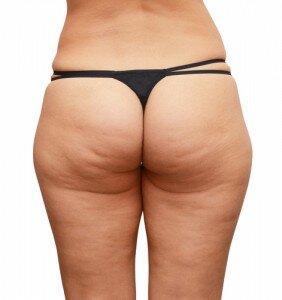 Cellulite is something most women battle at one point or another, but this does not mean that we have to like it. The lumpy, bumpy look is unflattering and can be a total confidence killer. There are things you need to know about cellulite so that you can either work to avoid it or at least cope when you are living with it.
Cellulite is something most women battle at one point or another, but this does not mean that we have to like it. The lumpy, bumpy look is unflattering and can be a total confidence killer. There are things you need to know about cellulite so that you can either work to avoid it or at least cope when you are living with it.
Not a Health Issue
Some people believe that cellulite indicates a health issue, but you can put your fears to rest. This problem is purely cosmetic and is not a medical condition or illness, so no need to run to the doctor once you start noticing cellulite. The dimpling may be very faint or very noticeable depending on the degree of cellulite. You will notice it most on your buttocks and thighs, but it can also occur on the upper arms, abdomen and breasts.
Cellulite Causes
Being a woman automatically puts you at risk because this happens to women far more often than men. Cellulite occurs when fat deposits sit alongside tough collagen fibers. The fatty areas can grow larger or the fibers can pull tight to cause the deposits of fat to bulge out.
It is also important to point out that you can get cellulite regardless of your weight. You can be of a healthy weight and still develop cellulite. If you have thinner skin it will be more visible.
You also need to look at other risk factors, such as being Caucasian, aging, genetics and pregnancy-related hormonal changes. Genetics is probably the biggest of these and you cannot control this. There are some risk factors that you can control, such as:
- Eating a ton of carbohydrates
- Being inactive
- Yo-yo dieting
- Increase in your overall body fat
- Being dehydrated
- Fluid retention
Tanning and Cellulite
Some people think that tanning can actually hide cellulite, and while it may help to reduce the appearance a bit, the effects of the UV exposure outweigh this. When you are frequently exposing yourself to UV light you are damaging your skin. This damage can make issues like cellulite a lot worse.
Treating Cellulite Through Weight Loss
While dropping those extra pounds may help to reduce your cellulite this is not a guarantee. You should always strive for a healthy weight, but do not expect it to be a fix-all for the dimpling. Some women will notice less cellulite, while for others, losing weight could make it look worse.
Body Wraps
These are often talked about for reducing cellulite. Body wraps are warm and can help to draw excess water from your tissues, but if any improvement in cellulite occurs it will be temporary. You also have to be careful because this can be dehydrating. Your actual body fat will not be reduced at all. If you had a wrap before and knocked off a few inches temporarily, then this could be a good idea for special occasions, but do not expect a miracle with this purported cellulite treatment.



![[Google]](/wp-content/plugins/easy-adsense-lite/google-light.gif)
